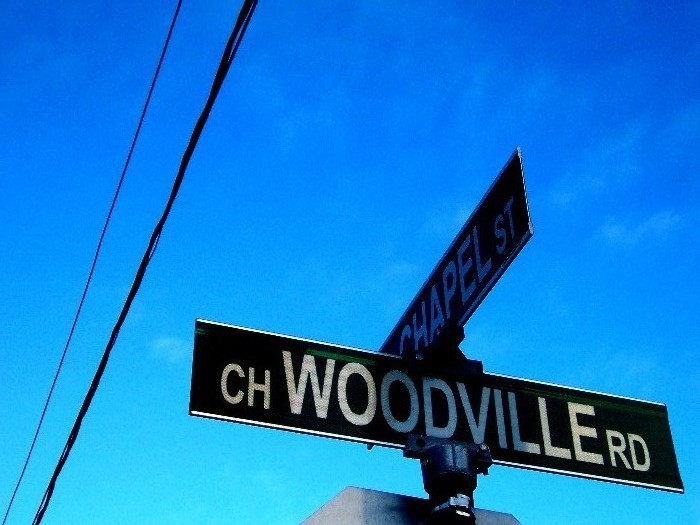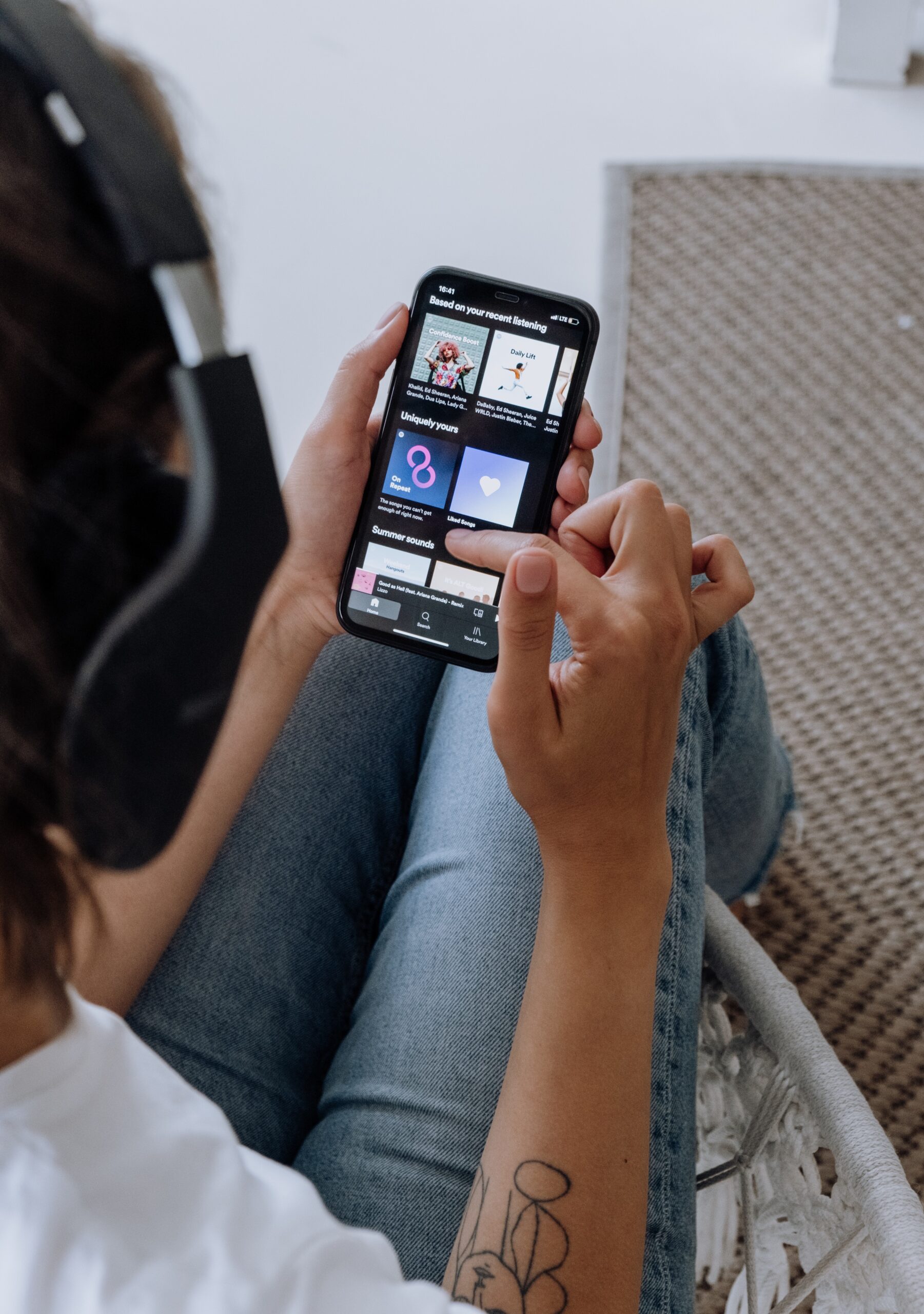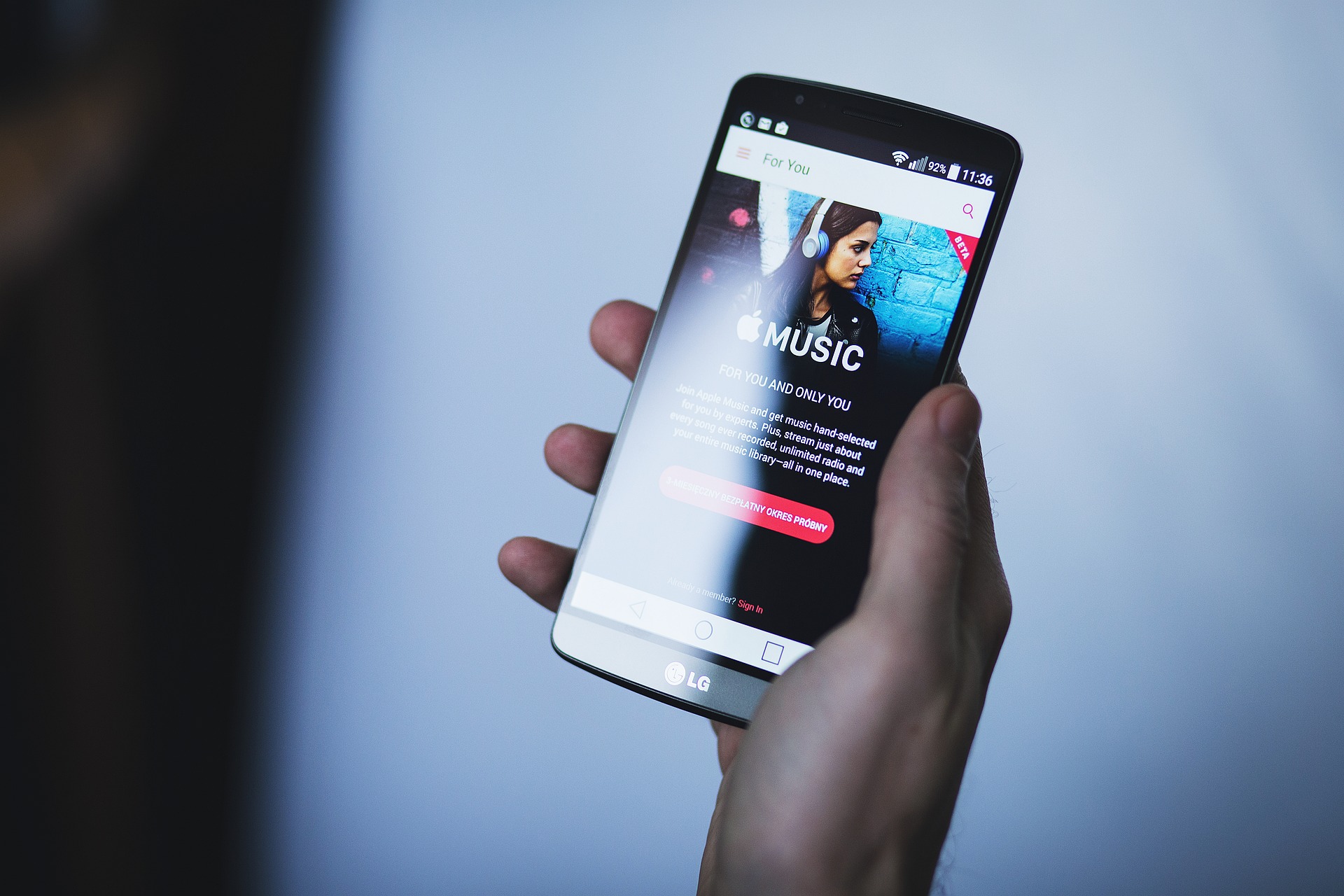Music Streaming
How a supposed solution to music piracy has complicated the music industry in Canada
By Erika Ibrahim
It’s the mid aughts. 2005 or 6. Winter.
I’m quickly trudging through the snow, my brown Keds with no tread making me slip the whole way to the bus stop as I race to catch public transit to high school.
My earbuds are rammed into my ears, my swinging fist with my mp3 player in its clutch making the thin cord of my headphones bounce slack and then taut and then slack again. The strobing bassline and off-key melody in Of Montreal’s “Bunny Ain’t No Kind of Rider” is playing.
I make it to the stop just in time—the shabby white and blue bus is halfway down the street and fast approaching.
As the doors open, I flash my laminated student bus pass to the driver, climb the steps and sidle toward the nearest empty seat. I drop myself onto the pale blue vinyl cushion and slide inward toward the window.

Close-up of the street sign beside Erika Ibrahim’s adolescent-era bus stop. Photo by Erika Ibrahim.
As I gaze onto vistas of small, faded wartime houses, I scroll through my iPod Shuffle, trying to find a track that imbues the right mood for my morning commute. The music is wrapping around me. It’s like a cocoon, a private forcefield in which I can inhabit a space for myself.
More than sounds pouring into my ears, music represented my conduit to the outside world. Having grown up in an east coast suburb, and then moved to a nearby small city, new music was a salve that softened the concrete sprawl and monotony of my teenage life.
Maybe I couldn’t control my physical surroundings, but the soundtrack for moving through it was my domain.
Skip forward 15 years.
It’s a Saturday morning, and I’m starting my weekend breakfast ritual. I get up, turn on the kettle, grind my coffee and throw it in my French press. I turn on my Bluetooth speaker and open the Apple Music app that costs about $15 per month for a family plan. I navigate to the “For you” tab and decide to play my customized new music mix while I poach my eggs.

A person listens to music on a smartphone via a music streaming app. Photo by Cottonbro. Unsplash.
The way people listen to music has always been in a state of flux and evolution. The digital disruption and anxieties around music piracy paved the way for music streaming services to position themselves as a legitimate digital distributor.
This way of listening to music is quickly becoming the ascendant distribution method for large swaths of the Canadian population. These services have opened up new possibilities, but are not free of their own sort of perils.
For the consumer, it is a quick and convenient way of accessing a favourite song, or a place to find a new one. For the artist, the picture is more complicated, with many decrying streaming services for the paltry royalty payouts.
At the same time, music streaming services are not currently accountable under the existing Canadian regulatory systems, meaning they are not required to provide funding for Canadian creators, nor are they obligated to suggest more Canadian artists through their “discoverability mechanisms.”
These “recommender dynamics” are especially troubling during a pandemic where artists have lost touring as a source of revenue and exposure. And in Canada, the effects of COVID-19 on the music industry have been estimated to last until 2023.
Because so much of listener activity has moved online and accessing music by way of streaming is more of a lifeline, critically examining them has become all the more pressing.
The tracks on my iPod Shuffle came to me by way of the internet, rather than local commercial radio or Much Music. During my precious one-hour allotment on the family computer, in between messaging friends, I trawled the web for new music. I became acquainted with music blogs, both bigger enterprises and smaller pet projects.
They usually followed this format: introducing the artist or band, saying a few things about them, and then embedding links to download a few songs in mp3 format. I discovered niches I had never heard of, expanding the bounds of what music could be. Rather than parroting the mainstream artists and singles of the day, these blogs showcased music from newer independent artists – with Arcade Fire, Yo La Tengo, LCD Soundsystem and M.I.A. among the starkest examples of artists who were catapulted to mainstream success by the buzz.
They also featured music from older and less well-known artists. I can still remember, for example, what it felt like to hear Laurie Anderson’s art rock track “From the Air” for the first time. The tension in the off-kilter saxophone progression, and Laurie’s spoken word surrealist narrative of an airplane pilot speaking to their passengers in the midst of the plane’s machinery failing, feels just as immediate as when I stumbled upon it years ago.
“In 2006, the music industry was collapsing. Piracy was killing it.” – Jérémy Erlich and Nathan Wiszniak, Spotify
Passionate people curated and shared links and uploaded tracks. Each song reminded me of the fact that there was a world beyond the one I saw directly in front of me. Each was a reminder that I could always reach out through my mom’s enormous Dell desktop computer and pull back a song that not only I would treasure, but that had been treasured enough by someone else to leave it there for someone like me to find. This portal to other like-minded people suggested community, too.
I’m grateful to have come of age during a fleeting and unprecedented window of access to a wide range of music. Because even in the chaos and financial devastation inflicted upon artists by Napster, Limewire, and the Pirate Bay (aided and abetted by music blogs), something else happened here too.
Corporations, major labels and moneyed interests lost the ironclad grip they’d held for so long on our musical taste. Someone other than the old guard of gatekeepers got to decide what was worth hearing. For a brief moment, a network of music blogs was the closest thing to a democratic playing field that we’ve seen in a long time. Any artist equipped with an internet connection and a Myspace page had a chance at finding their way onto my mp3 player, and by extension, onto the soundtrack of my youth.
I no longer visit music blogs to the same extent that I did as a teen. Part of that has to do with amassing the kinds of garden-variety responsibilities of adulthood that eat up whatever unbounded free time I used to have. But another part of that is the fact that music blogs have nowhere near the grip they used to on music culture, especially independent music.
Sure, some of those sites have stood the test of time, and I would not be surprised to learn that there are ride-or-die readers still patronizing their favourite blogs. But many of the ones I used to frequent are now dead domain links or abandoned, the final post a farewell by the site runner explaining why it no longer made sense to keep going. Even the bigger platforms like Pitchfork are struggling with how to continue publishing on music amid dwindling advertising revenues.
Around the same time in the late aughts, on-demand music streaming platforms like Spotify and Pandora gained popularity, bringing the latest upheaval to the music industry. Spotify led the charge, casting itself as a remedy to ongoing and widespread music piracy.
In testimony before the Standing Committee on Canadian Heritage, Spotify describes itself explicitly in those terms.
“For Spotify, audio is our history—and it’s our future. In 2006, the music industry was collapsing. Piracy was killing it. The idea that all music should be free for the taking, no matter the cost and effort, destroyed the careers of a lot of working artists, including in Canada. We believed there had to be a better way. And we knew our platform had to be nothing short of revolutionary if we were going to stand a chance of getting people to abandon piracy, and pay for music again.”
It was considered a solution that balanced the access to music that listeners had come to expect with a legitimate compensation model for the music industry. And it seems this approach has literally paid off. Spotify reported a total of 158 million paid subscribers to their service for the first quarter of 2021. The service has about 10 million monthly users in Canada, according to recent Spotify testimony before the Canadian Parliament’s Heritage Committee.

A person holds up their phone, displaying the homepage for a music streaming service. Pixabay.
Over time, I too have drifted to a music streaming service. At first, I marveled at the convenience and ease with which I could listen to music. I could explore and add albums from beloved artists to my heart’s content. The platform promised to make smarter music recommendations for me by tracking my loved artists and listening habits, which certainly sounded easier than the labour-intensive-yet-low-yield task of combing through boundless webpages for a track that resonated with my tastes. And a part of me felt self-satisfied for finally consuming music in a way that was financially equitable and sustainable for artists—at least, more equitable than my prior listening habits. This was good, right?
But as I ready my breakfast, something feels off. The first track features a tropical pitter-patter of drum machines. Overlaying it is an auto-tuned looping vocal harmony. After a few measures, the lead vocalist enters in, her voice coated in an indescribable plastic sheen. The song sounds so… controlled. I skip to the next song in the playlist. The track opens with a vaguely familiar plinking steel drum staccato scale. Skip. Hyper-synthetic electric guitar progression, a masculine auto-tuned voice delivering repetitive mumble rap flows.
I have started to notice patterns in my recommended playlists. It was hard to put my finger on, but it just felt like there were tacit limits to what would be included or not. The selection presented a veneer of variety. But although I was listening to different artists pushed into my personal playlist, they didn’t really sound so different from each other. Beyond that, I felt like I was missing that thrill of discovery I recall feeling as a teen, where I was actively seeking out and curating my own music library.
Spotify, Apple Music and the like do not seem to be the saviour solutions they were once thought to be. They have been said to replicate power imbalances and unequal representation in the music industry. They prioritize safer music to guarantee and maximize user engagement. They don’t pay artists as well as originally envisioned. And in the wake of this knowledge, Canadian artists, arts advocacy groups, and policy makers are grappling with the question of what should change.